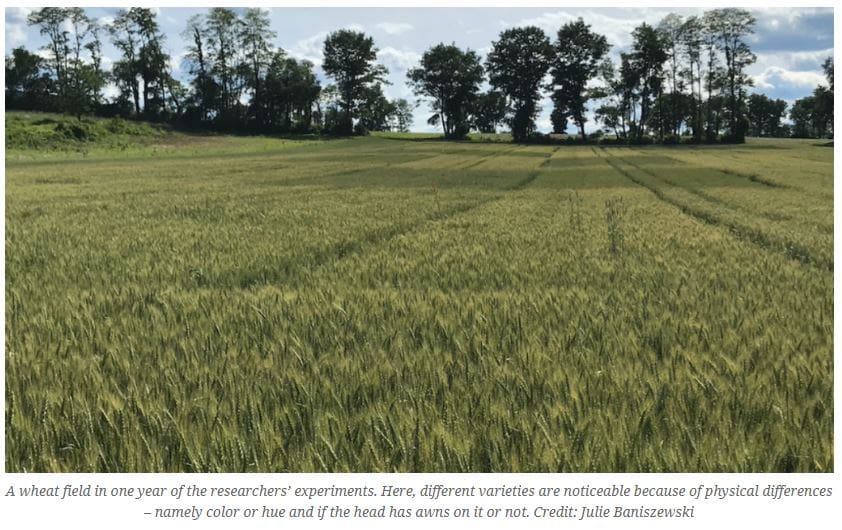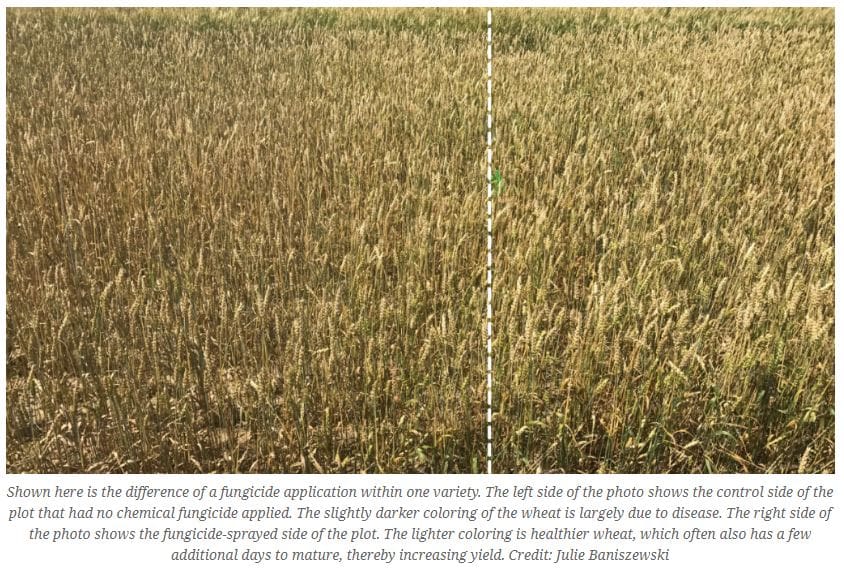
RESEARCHERS in the United States have looked into the value of mixing different varieties of wheat in the same paddock to increase genetic diversity and protect against total crop failure.
Pennsylvania State University graduate research assistant, Julie Baniszewski, and colleagues have been investigating the potential for different crop mixture systems to reduce disease and production risk.
Writing in the August 7, 2021, Sustainable, Secure Food Blog sponsored by the American Society of Agronomy and Crop Science Society of America, Ms Baniszewski said the group had created a range of crop mixture options containing either the same species or different species.
“My research involves lowering risks for farmers who grow wheat in a sustainable practice of crop mixtures,” she said.
“A typical wheat field is one variety, a monoculture production. This tends to be common because it is the most efficient method. However, this type of specialization often requires additional inputs, fertilizers, pesticides, and other chemicals, to maintain the high yields that are expected of modern agriculture. This, in turn, can cause a cycle of reliance on these chemical inputs.
“My work involves an alternative solution that reduces risks for farmers and keeps growing a healthy food supply.”
Combining different traits
Ms Baniszewski said compared to using crops from different species, a mixture from the same species was the easiest option because farmers could manage them as they would a typical monoculture.
“In the context of a wheat crop, a mixture would consist of two to four varieties of wheat,” she said.
“Each variety would have a different set of traits. One may be high yielding, another resistant to insect pests and yet another resistant to specific diseases. By combining these different sets of traits, the crop is more consistent year to year. The field is more diverse genetically and better able to reduce or withstand pest abundances and diseases.”
With these wheat mixtures in mind, the researchers created a three-year field experiment to determine if mixtures could:
- suppress diseases,
- increase predation of insect pests
- increase yield and economic value
Each year, they planted a wheat mixture of four varieties and compared the mixture results to stands with only the single varieties planted separately.
Only half of each plot was sprayed with pesticides to measure if the mixtures provided an environmental benefit similar to chemical inputs.
The researchers quantified insect predation using aphids, diseases, yield, and economic return over variable costs for each of the plots.
“The yield results were about the same as similar studies, so no surprises there. We found that fields sprayed with fungicides did have higher yields – but only enough to cover the expenses related to fungicide application,” she said.
“Some good results: the mixed variety plots had inhibited spread of foliar disease in the field comparable to the fungicide application. Although the wheat mixture was not the highest yielding, nor did it provide the greatest return over variable costs, it did inhibit disease to an extent consistent with a fungicide application – about 20-25 per cent.”

Ms Baniszewski said the value of crop mixtures was both a portfolio diversifier and an insurance policy.
“Although a higher-yielding, single variety wheat field may do well consistently for several years, having the same genetics in the same field has vulnerabilities. In one of those years, there could be a severe pest or disease outbreak, or a severe drought or climate event that that one variety is vulnerable to,” she said.
“By using crop mixtures, we increase the genetic diversity and safeguard against a complete crop failure that could occur with that single variety. The genetic diversity from the other combining varieties in mixtures may have disease or pest resistance and may thrive under otherwise stressful climatic conditions. That is, diverse crop mixtures, like financial portfolios, are more stable than any single variety.”
Sustainable, Secure Food Blog https://sustainable-secure-food-blog.com/2021/08/07/why-mix-varieties-of-wheat-in-a-field/

This technique was tried with wheat for some years in NW NSW around 50 years ago by Uni. of Sydney Narrabri. At that time in my recollection there were no newly released varieties that were totally resistant to all of the strains of stem rust that were prevalent. The tactic was to have a mixture of four (4) lines of material mixed and all together in the one field. If a strain of rust appeared, only one in four plants would be affected, and progress of the disease would be slowed down.
All four lines were of the same maturity group, and all were of similar field characteristics- height etc.
It lasted for a few years. When newer lines were bred with superior disease resistance. they took over and the multi lines were discarded.
Variation in grain quality of each of the four lines was also a limiting factor.